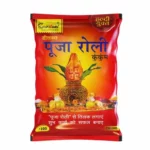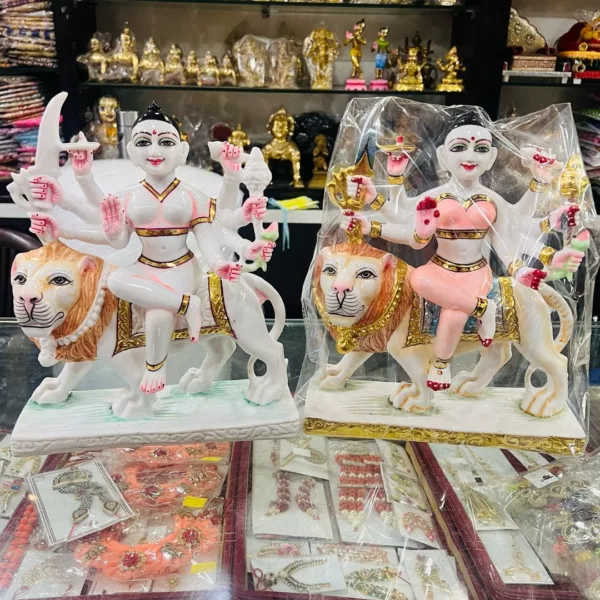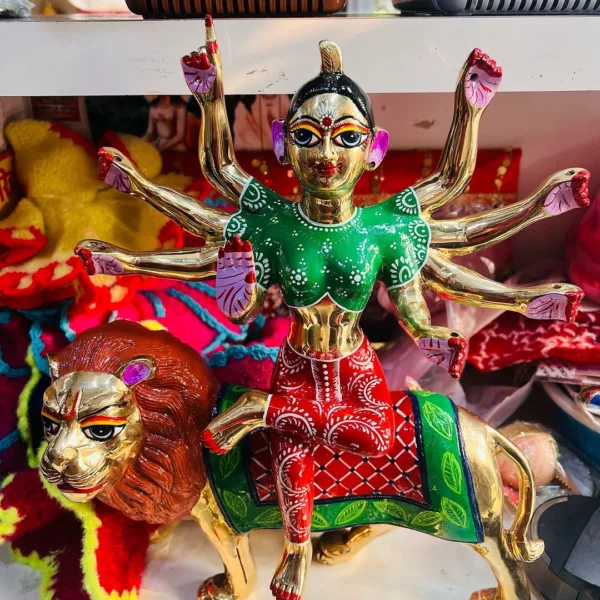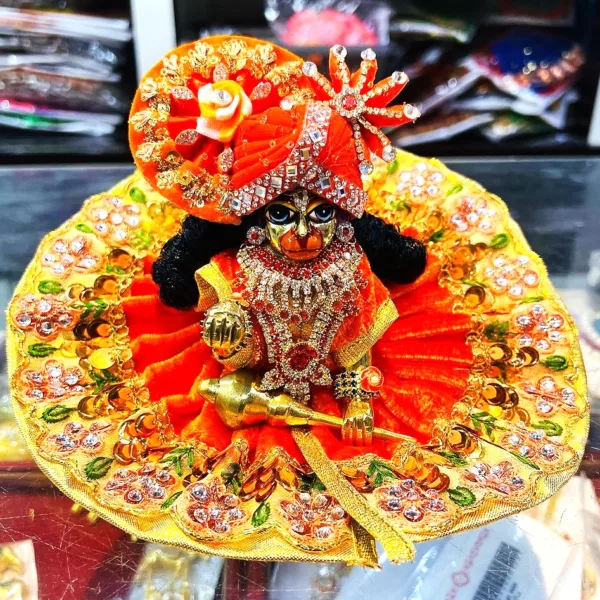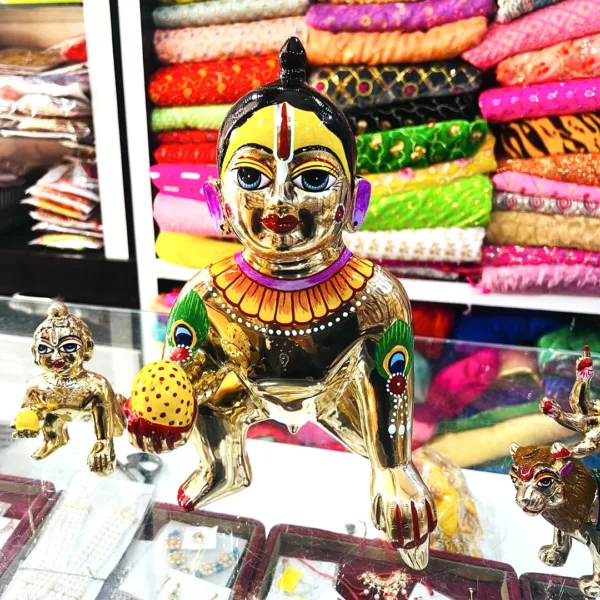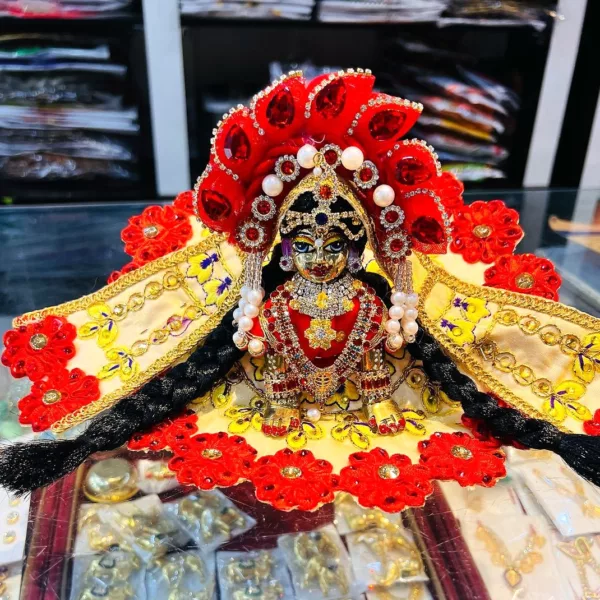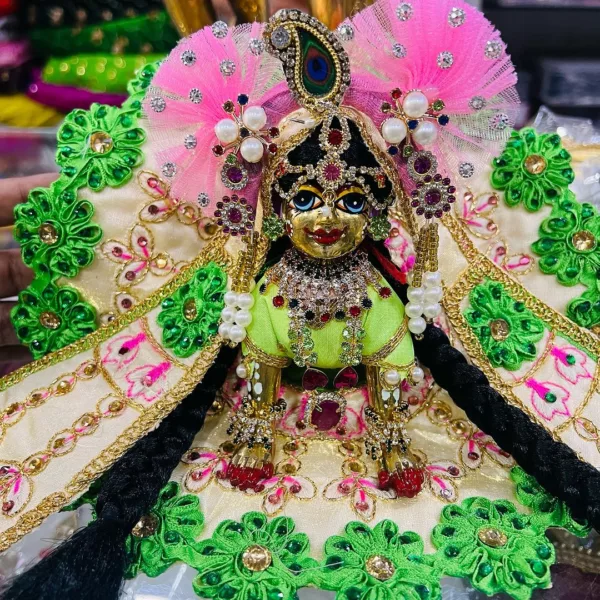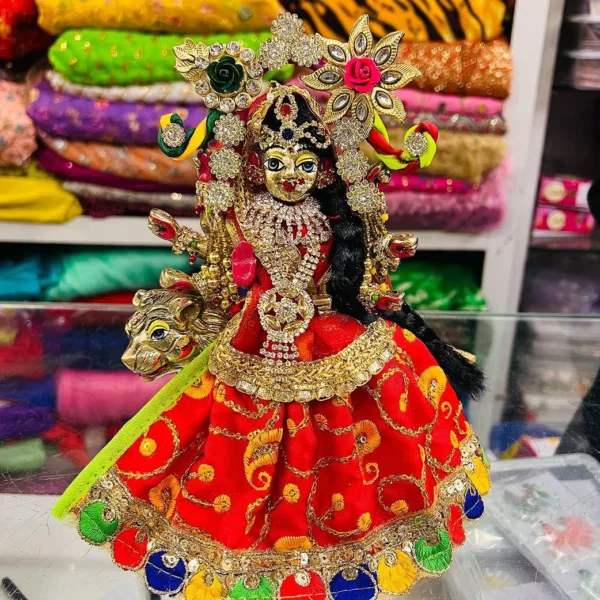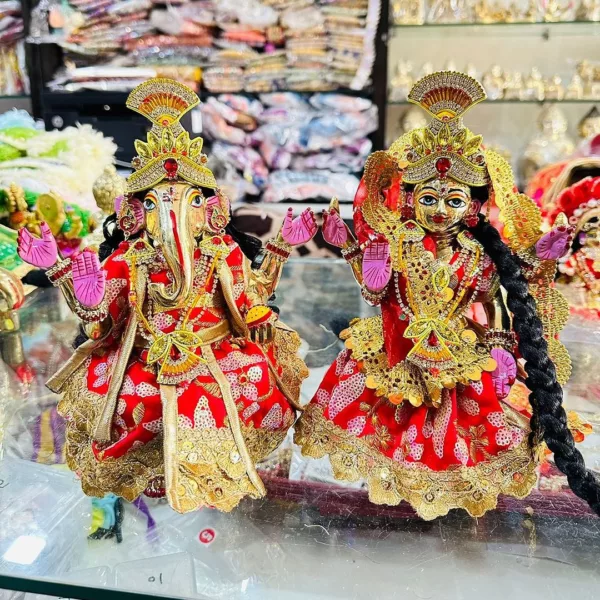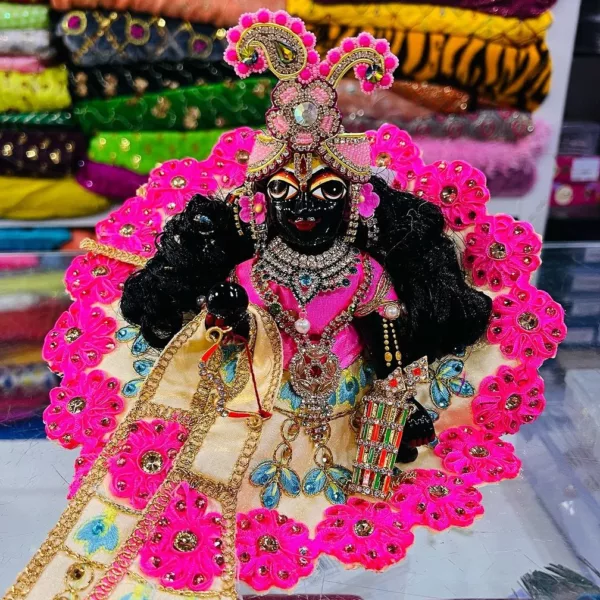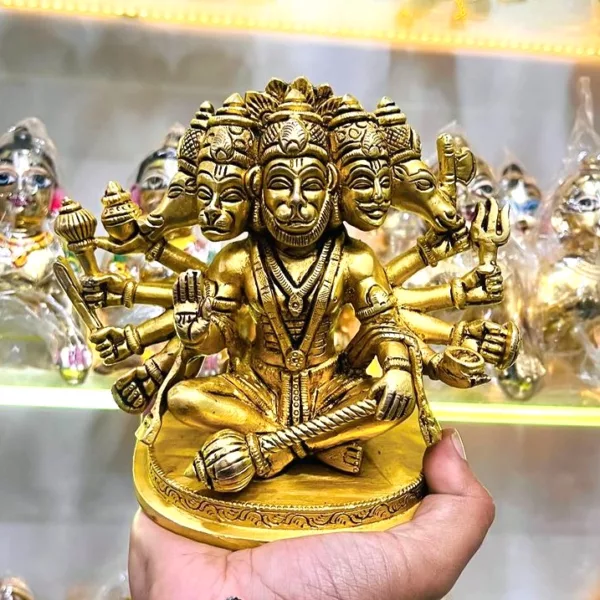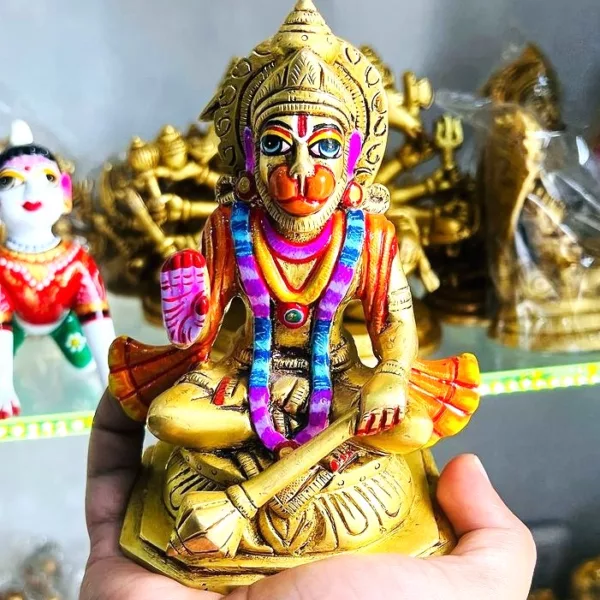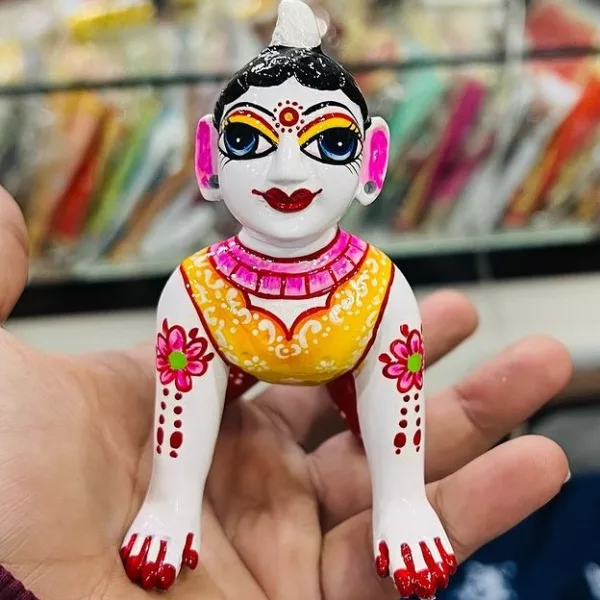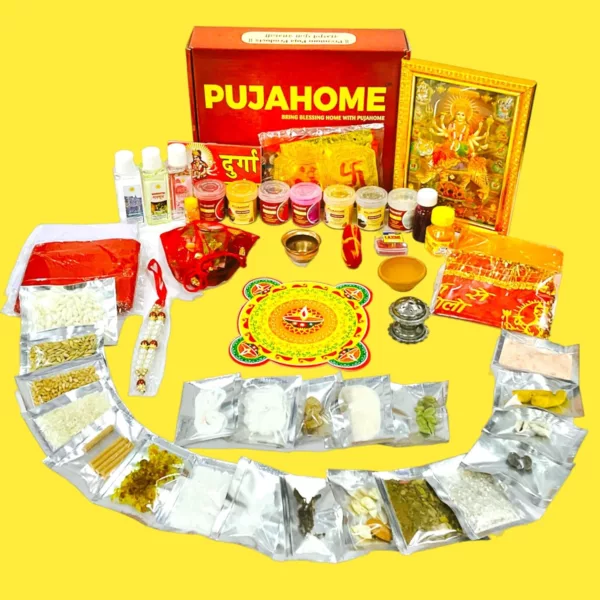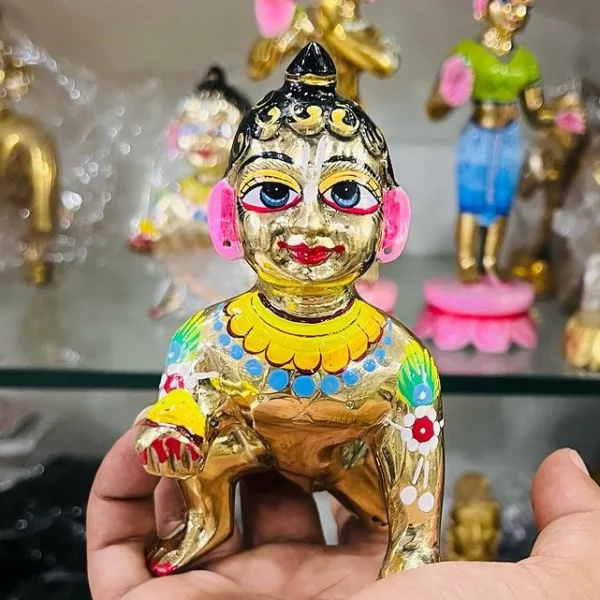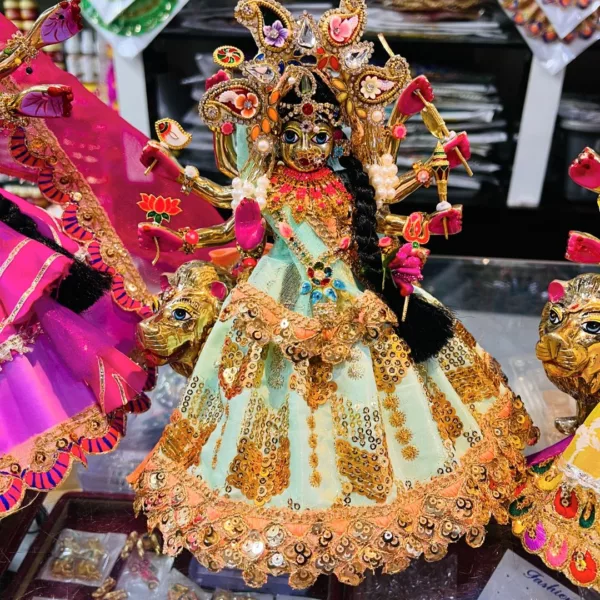In Hinduism, performing a puja is a sacred ritual that involves worshiping deities and seeking their blessings. A pujan samagri, or a set of items used in the puja, plays a crucial role in these rituals. Each item in the pujan samagri holds its own significance and is used for specific purposes during the puja. Let’s explore the importance of some common items found in a pujan samagri:
- Incense Sticks (Agarbatti): Incense sticks are lit during the puja to create a pleasant aroma. The fragrance is believed to purify the air and create a divine atmosphere, inviting the presence of the deity.
- Camphor (Kapur): Camphor is burned as an offering to the deity. It symbolizes the burning of ego and impurities within oneself, leaving behind a pure soul.
- Pooja Thali: The pooja thali is a plate used to hold all the items needed for the puja, such as flowers, rice, water, and incense. It symbolizes the universe and the completeness of the puja.
- Kumkum and Turmeric: Kumkum and turmeric are used to make a paste and applied to the deities’ forehead as a mark of blessing and auspiciousness.
- Havan Samagri: Havan samagri is a mixture of various herbs, ghee, and other natural ingredients used in fire rituals (havan). It is believed to purify the environment and create positive energy.
- Bell (Ghanta): The bell is rung before and after the puja to ward off evil spirits and attract positive energy. It is also believed to help focus the mind during the ritual.
- Coconut: The coconut is offered to the deity as a symbol of purity, selflessness, and the ability to withstand hardships.
- Flowers: Flowers are used in puja as a symbol of beauty, purity, and devotion. They are offered to the deity as a gesture of love and reverence.
- Prasad: Prasad is a sacred food item that is offered to the deity and then distributed to the devotees. It is believed to carry the blessings of the deity.
- Diya (Oil Lamp): The diya is lit during the puja to symbolize the presence of divine light and knowledge
- Rice (Akshat): Rice is used as an offering during the puja. It symbolizes abundance, fertility, and prosperity.
- Sandalwood Paste (Chandan): Sandalwood paste is applied to the deities’ idols or pictures. It is believed to cool the mind, enhance focus, and purify the body.
- Holy Water (Gangajal or Tulsi Water): Holy water, often from the Ganges river or infused with Tulsi leaves, is used for sprinkling during the puja. It is considered purifying and spiritually cleansing.
- Holy Thread (Mouli or Kalava): A sacred thread is tied around the wrist during the puja as a symbol of protection and blessings from the deity.
- Betel Leaves and Nuts: Betel leaves and nuts are offered to the deity as a symbol of hospitality and respect. They are also believed to aid in digestion and promote good health.
- Fruits: Fruits are offered to the deity as a symbol of gratitude and devotion. They are also considered pure and are believed to be liked by the deities.
- Coins: Coins are often offered to the deity as a symbol of wealth and prosperity. They are also believed to bring good fortune.
- Yantras: Yantras are sacred geometric diagrams that represent different aspects of the divine. They are used in pujas to invoke specific energies or deities.
- Conch Shell (Shankh): The conch shell is blown before and after the puja to create a holy sound that is believed to purify the environment and ward off negative energies.
- Idols or Pictures of Deities: Idols or pictures of deities are central to the puja as they represent the divine presence. They are worshipped with devotion and reverence.
- Dhoop (Incense Resin): Dhoop is a type of incense that is burned during the puja. It is believed to purify the environment and ward off negative energies.
- Ghee: Ghee is used in lamps and as an offering to the sacred fire during the puja. It is believed to symbolize purity and is considered auspicious.
- Lotus Seeds (Makhana): Lotus seeds are offered to the deity as a symbol of fertility, abundance, and spiritual growth.
- Sweets: Sweets are offered to the deity and then distributed as prasad. They symbolize the sweetness of devotion and the blessings of the deity.
- Milk: Milk is offered to the deity as a symbol of purity and nourishment. It is believed to be a favorite offering of many deities.
- Holy Ash (Vibhuti): Holy ash is applied to the forehead or consumed as a symbol of purity and protection. It is believed to have spiritual and medicinal properties.
- Honey: Honey is offered to the deity as a symbol of sweetness and purity. It is believed to attract positive energies and bring blessings.
- Holy Books (Scriptures): Sacred texts such as the Bhagavad Gita, Ramayana, or Quran are often kept near the altar during the puja. They are considered sacred and are read to invoke blessings.
- Candles: Candles are lit during the puja to symbolize the presence of divine light and dispel darkness.
- Bael Leaves: Bael leaves are offered to Lord Shiva as they are believed to be his favorite. They symbolize devotion and are believed to bring blessings.



